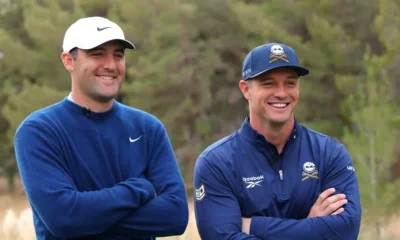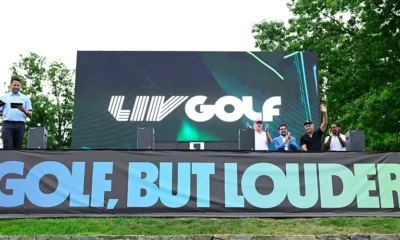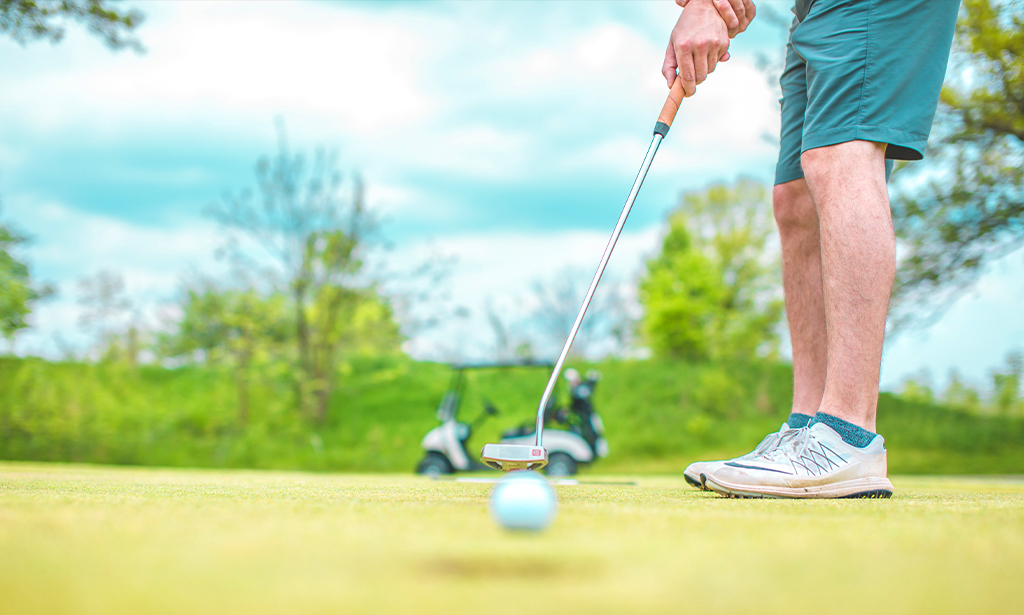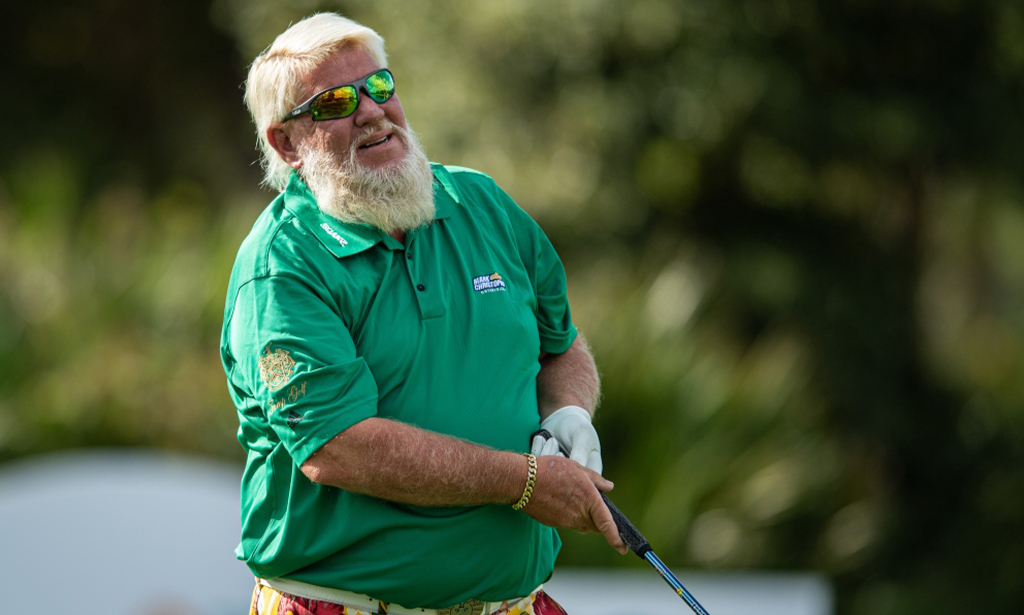Blog
5 Questions About the Brooks-Bryson Showdown
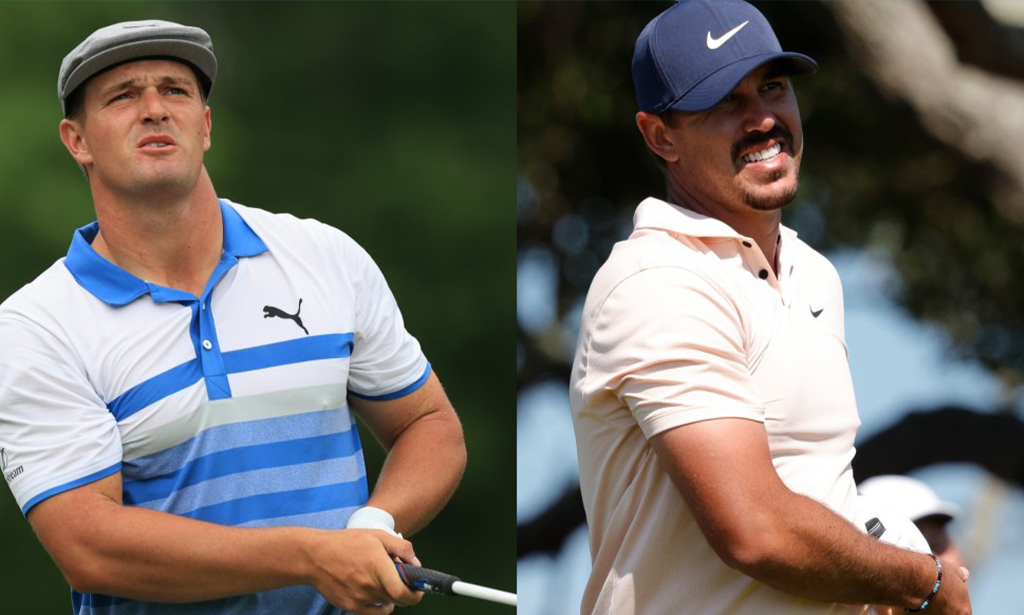
The best characteristic of the folks behind The Match, golf’s series of made-for-TV showdowns, is that they’re willing to adapt.
The first Match pitted the game’s two biggest names, Tiger Woods and Phil Mickelson, in a $9 million Las Vegas pay-per-view the day after Thanksgiving in 2018. Viewers flocked to place their orders; when else would they get to see Tiger vs. Phil like this? Overall, the show delivered; we got Woods sending it to sudden death playoff holes, we got a peek at Shadow Creek (Vegas’ mythic golf cathedral) and we got Mickelson winning the entire thing in the darkness on the 22nd hole on a strange, modified par-3 over a waterfall. It was strange and it was wonderful and it was very Vegas.
But not everything worked. The pay-per-view, for one thing. And Mickelson and Woods never quite seemed to decide whether they were doing friendly or intense, so instead they didn’t really do either. Their banter was flat and forced, their golf was lackluster and the whole thing took damn long.
This is why we keep playing golf even when we suck 98 percent of the timepic.twitter.com/Mm7KfAXRxD— LKD (@LukeKerrDineen) May 24, 2020
Then the show adapted. Its next iteration brought back Woods and Mickelson, but this time with partners: Woods got Peyton Manning, while Mickelson got Tom Brady. Suddenly there were more characters, more dialogue, more natural banter. There was less dead air, with golfers in carts connected to the broadcasters. There were more golf shots. And there was heightened star power, too — a certain subset of the American populus would watch Tom Brady and Peyton Manning visit the DMV, so watching them play golf added another layer of intrigue. (Note to self: that DMV idea isn’t half-bad…)
Mickelson excelled in the format, so he stayed on to anchor the next edition, which aired the day after Thanksgiving 2020 and featured the redemption of Charles Barkley’s golf game, the all-athlete team of Manning and Steph Curry and a terrific format tweak to modified alternate shot. It wasn’t fast-paced. It wasn’t viral, must-see TV. But it was still fun.
A bettor @dksportsbook put $1K on Chuck to hit the fairway on his first drive (+285)
Cash it ? pic.twitter.com/LIVbLHPZFg— br_betting (@br_betting) November 27, 2020
They added a couple wrinkles for The Match IV, heading to Montana and introducing Bryson DeChambeau and Aaron Rodgers to face off against Brady and Mickelson. Rodgers showed up with a surprisingly sharp game, we got to see DeChambeau pound driver at elevation and a bear even wandered through the set. (It was slow, though.)
Clutch gene. ?@AaronRodgers12 walks in one final putt to win The Match alongside @B_DeChambeau. pic.twitter.com/WNEJ1zEMRX— PGA TOUR (@PGATOUR) July 7, 2021
Now The Match V returns with the original 1 v. 1 format, pitting DeChambeau against rival Brooks Koepka, who is making his series debut. They’ll play 12 holes at The Wynn, just steps from the heart of the Las Vegas Strip. The Match’s announcement was received with excitement and eye-rolls in seemingly equal measure. So who’s right — the believers or the skeptics? In short, we don’t know yet. The Match’s producers and competitors have some questions to answer. Here are five of the biggest:
1. How real is the feud, anyway?
There’s a reason we’ve been begging for this matchup, whether in a PGA Tour event or elsewhere. Their public beef dates back to January 2019, when Koepka called out DeChambeau for slow play. Since then there have been too many developments to properly catalog. But of late the feud seems to have cooled; Commissioner Monahan called off fans yelling “Brooksy” at DeChambeau, the two agreed to play nice at the Ryder Cup and even finished the week with a public embrace.
When the Match was announced, then, some golf fans were understandably wary. Was the entire thing a marketing ploy? An attempt to climb the PIP leaderboard? Was it all just made up?
My guess: It’s more real than you might think. Think back to the moment this initially took off, when an outtake from Koepka’s interview with Todd Lewis leaked and his reaction to DeChambeau walking by became the eye-roll seen ’round the world. That was real annoyance. There’s no faking a reaction like that. And now they’re taking advantage of it. They’re cashing in on that very real tension. Speaking of which…
2. Will they go friendly or frosty?
There are two approaches that would result in particularly worthwhile viewing here. The first would be a reconciliation of sorts, where the two hash out their differences in an authentic series of conversations that take place over a series of holes. They wouldn’t necessarily resolve anything but they’d at least address the root of the feud. I’m envisioning Zoolander and Hansel getting together for their epic confrontation:
“Why you been acting so messed up towards me?”
Wow, just typing that makes me consider its improbability. But it’s not impossible. The “authentic” note just seems like the toughest one to hit.
The second approach would be embracing the rivalry’s contentiousness. They could each demonstrate their legitimate dislike for the other through open frostiness. Uncomfortable silences. Pettiness. Non-conceded putts. General graveness. The outside chance of a physical altercation would linger over every green. This would be awesome but, again, unlikely. It’s golf.
My guess: DeChambeau is, by nature, friendly and non-confrontational, which might make both options difficult. Koepka is good at staredowns, he’s good at pettiness and he’s good at looking dour. But he has also seemed more comfortable buddying up with DeChambeau in recent weeks, so it’s not clear he could really go full heel here. Hopefully there’s some middle ground they can hit, but managing this balance seems like this match’s biggest challenge.
3. Can 1 vs. 1 work?
There’s a reason event organizers added more characters to this thing. Not even Woods and Mickelson could fill four-plus hours of dead space. There’s a lot of pressure to be entertaining when millions of people are tuning in just to watch you walk from the tee to your ball — and these guys are used to making those walks in silence or muttering to their caddies.
It’s tough to keep tension high for four-plus hours when there are just two golfers and they’re forcing banter. And it’s tough to fill the space if they aren’t forcing banter, too. So this is another challenge.
My guess: They’ve taken a few steps to resolve this one. First there are the earpieces, which connect competitors to broadcasters who can guide conversation or introduce wrinkles of their own that take some of the pressure off their mano a mano interactions. Next are the golf carts, which speed up play and avoid the awkwardness of figuring out whether they should walk together down the fairway. And then there’s the decision they’ve made to shrink the competition to 12 holes.
4. Is 12 holes the correct answer?
There is an obvious benefit to 12 holes: It doesn’t take as long as 18 holes. The Match has struggled with going too long, and now it will be shorter! But it’s still longer than nine holes, so you’re getting two-thirds the golf instead of just half. That would be unsatisfying.
The downside is mostly to the match’s perceived legitimacy. A round of golf is generally considered to be 18 holes, and golf matches are generally considered to be 18 holes. Does 12 holes take away from the winner’s accomplishment?
My guess: We’re still talking about The Match here. It’s fun, but it doesn’t exactly define a player’s legacy. So 12 holes isn’t really a deal-breaker. If we’re splitting hairs, I’d rather get 13 holes than 12, but I think it’s a worthy effort to stave off accusations of “this is boring!” and squeeze into a shorter TV window.
5. What, if any, role will Phil Mickelson play?
The only constant through the first four editions of The Match has been ole Lefty. Now the PGA Champ won’t be on the playing field — but will he be in the broadcast booth? Standing on the 18th hole, challenging each guy to a closest-to-the pin competition? Watching from the adjacent sportsbook, firing in prop bets? Several hours of Mickelson behind the microphone could be exactly the sort of eccentric energy this event demands.
My god, Phil did not hold back on the smack talk. pic.twitter.com/SX9wmRPPZt— GOLF.com (@GOLF_com) July 6, 2021
My guess: He’ll be there, reunited with his former partner Charles Barkley, calling the action alongside Ernie Johnson. That’ll be an extremely good thing for everyone watching and trying to stave off a post-Thanksgiving nap.
This article originally appeared on Golf.com.
Blog
Sustainability in Golf: The Future of Eco-Friendly Greens
Read about the environmental impact of golf courses.
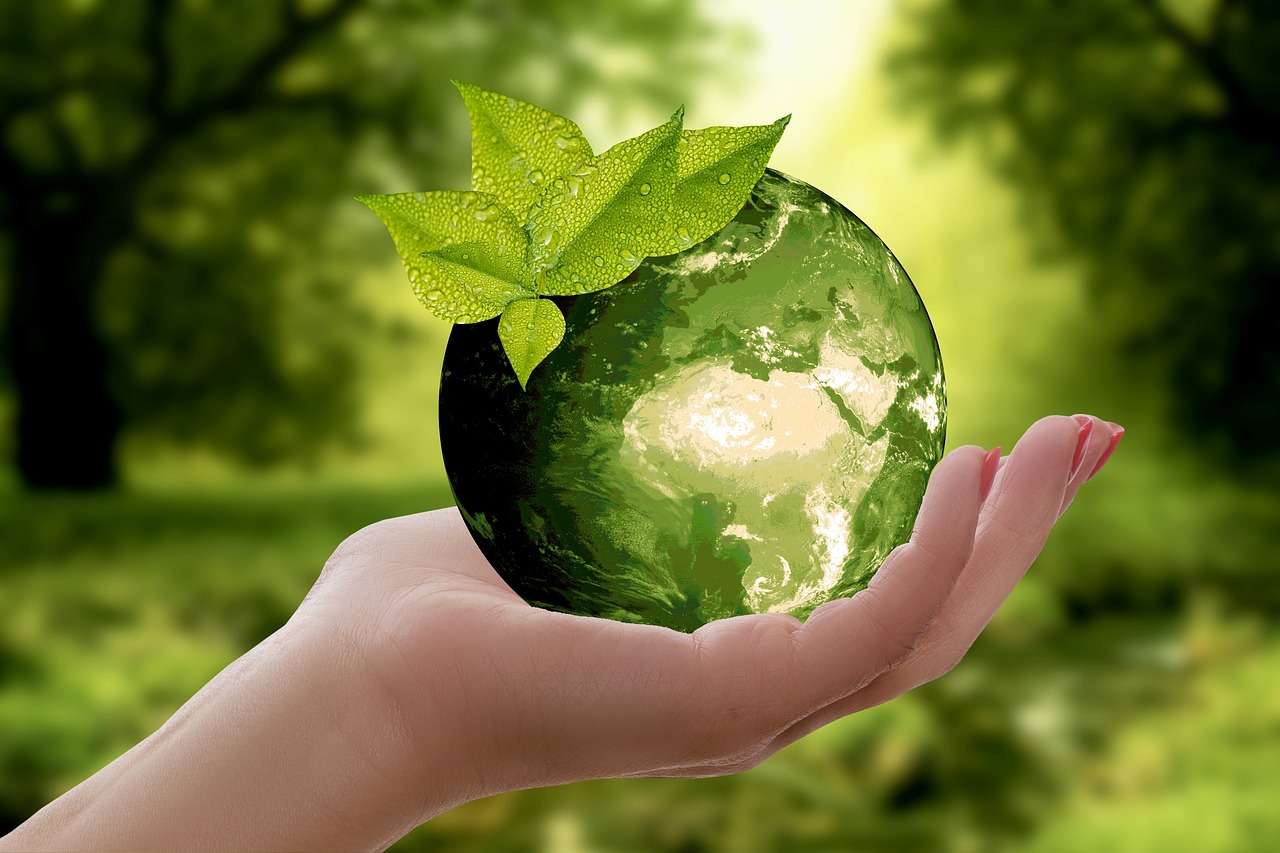
Golf, a sport often associated with pristine, manicured greens and lush landscapes, isn’t historically perceived as eco-friendly. However, with growing concerns about climate change and sustainability, the golf industry is steadily transitioning towards more sustainable practices. This article will explore how golf courses around the world are becoming greener and more eco-friendly while maintaining their appeal to golf enthusiasts.

The Environmental Impact of Golf Courses
Golf courses traditionally use extensive resources, including water, pesticides, and fertilizers, which can have detrimental effects on the environment.
-
-
- Water Usage: Maintaining the verdant landscapes of a golf course requires enormous amounts of water. This is particularly concerning in regions where water scarcity is a significant issue.
- Pesticides and Fertilizers: To keep golf courses lush and free of pests, large amounts of chemicals are often used. These substances can seep into the ground, polluting water sources and harming local wildlife.
- Habitat Disruption: Golf courses often displace natural habitats, upsetting local ecosystems and reducing biodiversity.
-

Green Initiatives in Golf: Sustainability on the Fairways
Recognizing the environmental impact, many golf courses are now implementing sustainable practices to reduce their ecological footprint.

Water Conservation
Water conservation is a significant focus in eco-friendly golf course design. Methods employed include:
-
-
- Recycled Water: Many golf courses are now using recycled water or rainwater for irrigation, significantly reducing the use of freshwater resources.
- Drought-resistant Grass: Some courses are opting for drought-resistant varieties of grass that require less watering.
- Irrigation Technology: Advanced irrigation systems can efficiently distribute water, minimizing waste.
-
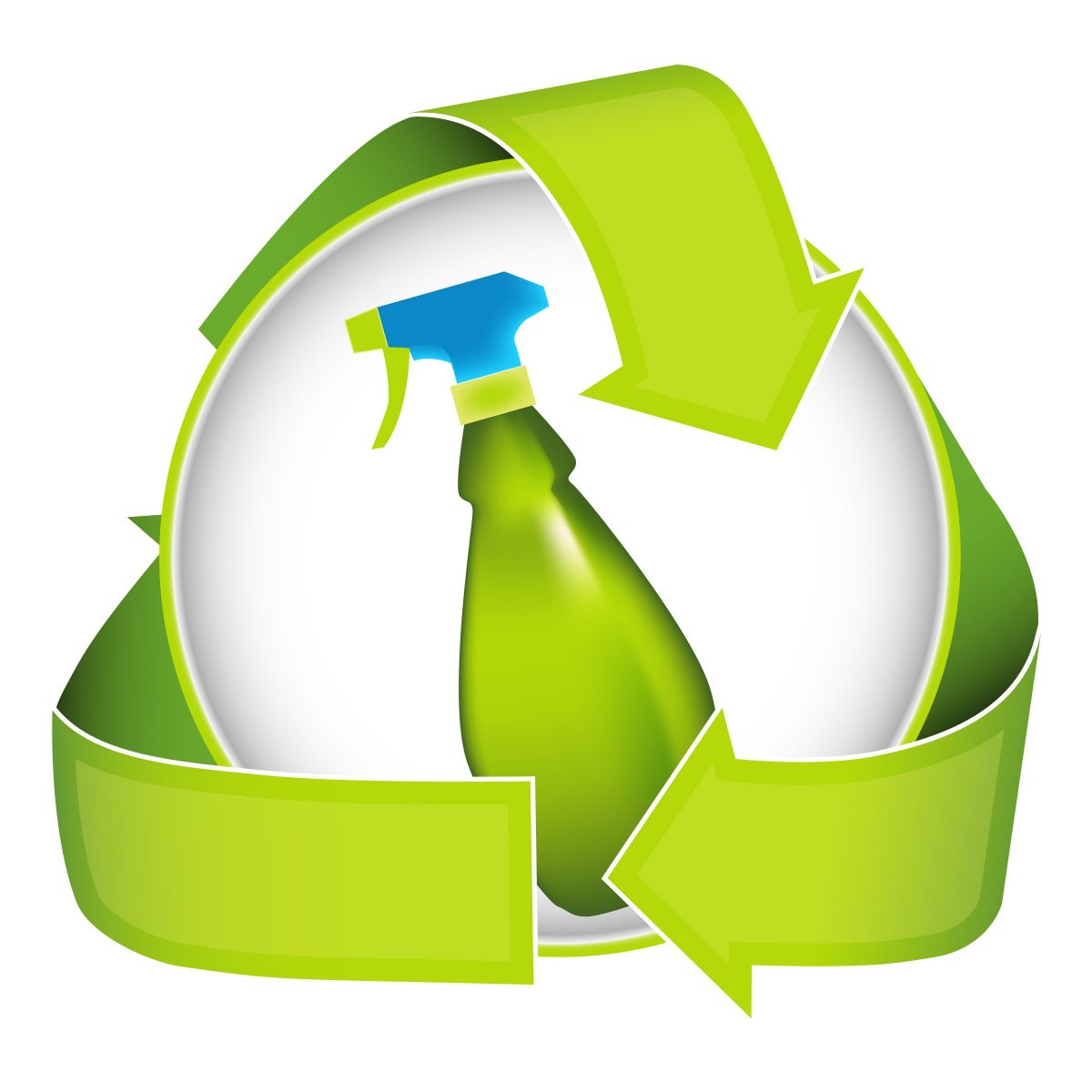
Reducing Chemical Usage
Reducing the use of harmful chemicals is another crucial step towards sustainability in golf. This can be achieved through:
-
-
- Organic Fertilizers and Pesticides: Many golf courses are switching to organic alternatives, which are less harmful to the environment.
- Integrated Pest Management: This approach focuses on long-term prevention of pests through biological control and habitat manipulation, reducing the need for chemical pesticides.
-

Preserving Local Habitats
Golf courses are increasingly being designed to coexist harmoniously with local ecosystems. This involves:
-
-
- Preserving Natural Features: Instead of altering the landscape to fit the course, designers are now incorporating existing natural features into the design.
- Creating Wildlife Habitats: Some golf courses are creating habitats for local wildlife, promoting biodiversity.
-
Case Studies: Sustainable Golf Courses Around the World
There are several golf courses worldwide that serve as excellent examples of sustainability in the industry.
- Pebble Beach Golf Links, USA: This renowned golf course uses recycled water for irrigation, reducing its freshwater use by 50%.
- St Andrews Links, Scotland: Known as the “Home of Golf”, St Andrews Links has implemented an extensive environmental management plan, including water conservation, habitat protection, and the use of organic fertilizers.
- Vineyard Golf Club, USA: This golf course in Massachusetts is one of the first to become fully organic, using only organic fertilizers and pesticides.
The Future of Sustainable Golf
The golf industry’s move towards sustainability is not just about eco-friendly practices on the course. It’s also about educating players and visitors about the importance of sustainability, thus promoting a culture of environmental consciousness.
While the transition to greener practices may be challenging, the benefits are immeasurable. Sustainable golf courses not only help protect the environment, but they can also enhance the playing experience, offering golfers the chance to play their favorite sport while surrounded by thriving, natural landscapes.
In conclusion, as awareness of environmental issues continues to grow, the question of “how green can the greens get?” is being answered by golf courses worldwide. Through innovative practices and a commitment to sustainability, the future of golf looks set to be greener than ever. As players, supporters, and enthusiasts of the sport, we can all contribute to this positive change by supporting golf courses that prioritize sustainability and by advocating for green practices within the golfing community.
Blog
The Golfer’s Holiday Hint-Dropping Guide
Your spouse thinks you want socks. You want a new driver. Here’s how to fix that.

Because subtlety is overrated when there’s a new driver on the line
Your spouse thinks you want socks.
Your kids think you want a tie.
Your mother-in-law is convinced you’d love another sweater with a reindeer on it, even though you’ve worn the last three exactly never, and everyone knows it, but somehow this year will be different.
It won’t be.
Here’s the problem. You want golf stuff. They don’t know what golf stuff means. You say “rangefinder” and they hear “robot finder.” You mention “premium golf balls” and they think all golf balls are the same, which is adorable but wrong, and you can’t exactly explain that without sounding like a crazy person who cares too much about dimple patterns.
So you need a strategy.
Not a subtle one either. Forget dropping hints like breadcrumbs. Drop them like anvils. We’re talking about a systematic campaign of suggestion, repetition, and strategic device-leaving that would make Madison Avenue jealous.
The Laptop Strategy (For the Tech-Savvy Golfer)
Leave your laptop open. Always. But not to just anything.
Open to golf retailer websites with items in your cart. Specific items. With the size, color, and model number clearly visible. And here’s the key – leave it open on the kitchen counter where your spouse makes coffee, because everyone looks at screens while waiting for coffee, it’s basically a law of physics at this point.
Do this for three weeks straight. Different items, same cart. They’ll get the message. And if they don’t, you’ve got a backup plan because you can just buy it yourself on December 26th when everything goes on sale.
The Casual Mention Method
This requires finesse.
Not too much though.
The goal is to work golf gifts into every conversation without seeming obsessed, which you are, but they don’t need to know that. Your daughter mentions her science project? “Speaking of projects, I’ve been thinking about upgrading my wedges.” Your son talks about his basketball shoes? “Funny you mention shoes – golf shoes with better traction would really help my game.” The mailman asks how you’re doing? “Great, though I’d be better with a new putter.”
Is this overkill? Maybe. Will it work? Absolutely.
The Magazine Massacre
Buy every golf magazine on the newsstand. Dog-ear the pages. Circle items in red pen. Write notes like “This would be perfect!” and “Honey, look at this one!” and leave them everywhere – the bathroom, the nightstand, the kitchen table, the car, their car, basically anywhere someone might sit for more than thirty seconds.
When they ask why there are seven golf magazines in the living room, just smile and say you’re “doing research.” Research for what? They won’t ask. They’re too busy looking at all those circled items with price tags helpfully highlighted.
The Strategic Screenshot
Text them screenshots. Daily.
“Look at this cool driver!” Send.
“These gloves are on sale!” Send.
“Remember when I mentioned wanting new golf shoes? These are the ones.” Send with three heart emojis because you’re not a monster, you still care about the relationship, you just also care about having the right equipment to shave three strokes off your game.
It’s called balance.
The Gift List That’s Not a Gift List
Create a shared note on your phone called “Gift Ideas” and fill it exclusively with golf items. When they ask what you want for Christmas, just say “Oh, I don’t know, I’m easy to shop for!” and then casually mention you made a little list of ideas, you know, just in case they needed inspiration, no pressure, but it’s organized by price range and includes links.
This works because you’re giving them exactly what they want – a clear shopping list – while maintaining the illusion that you’re being flexible. You’re not. But they don’t need to know that until after the presents are wrapped.
The Buddy System
Recruit your golf buddies. Have them “accidentally” call when your spouse is around. Make sure they loudly discuss the new equipment they just bought and how much it’s improved their game. Your spouse will hear. They’ll connect the dots. And if they don’t, have your buddy call again tomorrow. And the next day. Eventually, either your spouse will buy you golf stuff or they’ll buy you a different phone number, and honestly, both outcomes have their merits.
The Amazon Wish List Blitz
Create an Amazon wish list. Share it with everyone. Your spouse, your kids, your parents, your siblings, your coworkers, that guy you met at the driving range once, everyone.
Put forty items on it. Thirty-eight should be golf-related. The other two? A book and a candle, just so you seem reasonable and well-rounded, which you’re not, but again, they don’t need to know that.
Update it weekly. Add reviews in the comments like “Would really help my slice” or “These are the exact ones my pro recommended.” Make it impossible for them to buy anything else because everything else looks boring compared to golf equipment that promises to transform your game, which it might not, but the promise is what matters here.
The Direct Approach (For the Brave)
Just tell them.
Seriously.
Sit them down. Look them in the eyes. Say “I want golf stuff for Christmas. Specifically, I want this driver, these balls, and this rangefinder. Here are the links. Here are the specs. I’ve made it as easy as possible. Thank you for listening to my TED talk about my golf needs.”
Will they appreciate the honesty? Probably. Will you get what you want? More likely than if you kept hoping they’d telepathically understand that you need a new sand wedge because the grooves on your current one are worn down and it’s affecting your bunker play, which is already bad enough without equipment issues.
The Follow-Up Campaign
Don’t stop after dropping hints. Follow up. “Did you see that text I sent about the driver?” Ask during dinner. “Remember those golf shoes I mentioned?” Ask during breakfast. “Still thinking about that rangefinder.” Say it to no one in particular while watching TV.
Repetition is your friend. Marketing people know this. Politicians know this. Now you know this. Say it enough times and it stops being a hint and starts being a fact – you want golf stuff, they know you want golf stuff, and somewhere in the back of their mind, they’re starting to accept that golf stuff is happening this year.
The Backup Plan
Here’s the truth – they might still get it wrong. They might buy you golf-themed pajamas when you wanted golf balls. They might get you a gift card to a mini-golf place when you wanted a membership to a real course. They might wrap up golf socks, which are fine, but they’re not the GPS watch you’ve been talking about since July.
It’s okay. Say thank you. Mean it. Then on December 26th, hit those post-Christmas sales like a bargain hunter who knows exactly what they want and has been planning this shopping trip since Thanksgiving.
Because you have been.
And that’s fine. Golf equipment is expensive. If waiting one more day means you can get 40% off that driver you’ve been eyeing, that’s called being financially responsible. Your spouse will appreciate it. Eventually. After you explain why you needed three new wedges when you already have wedges.
“The grooves,” you’ll say.
They won’t understand.
But you’ll have new wedges.
The Real Gift
Look, here’s what matters. The holidays aren’t really about getting the perfect golf equipment, even though that would be nice, and you’ve spent considerable mental energy making sure everyone knows exactly what you want.
The holidays are about spending time with people you love. Even if they buy you reindeer sweaters. Even if they think all golf balls are the same. Even if they wrap up golf socks when you desperately need new grips for your irons.
They’re trying. That counts for something.
But also, leave your laptop open to that golf retailer website. Just in case. Because trying is good, but specific product links are better, and you didn’t make it this far in the season without having a solid Plan B.
Happy holidays. May your drives be long, your putts be true, and your gift-givers be observant enough to notice the forty-seven hints you’ve dropped since October.
And if all else fails?
There’s always next year.
Blog
Unveiling the History and Symbolism of Iconic Golf Trophies
Golf is a sport steeped in tradition, prestige, and class. From the lush greens of the course to the meticulously designed clubs, each aspect of the game exudes a sense of history and elegance.
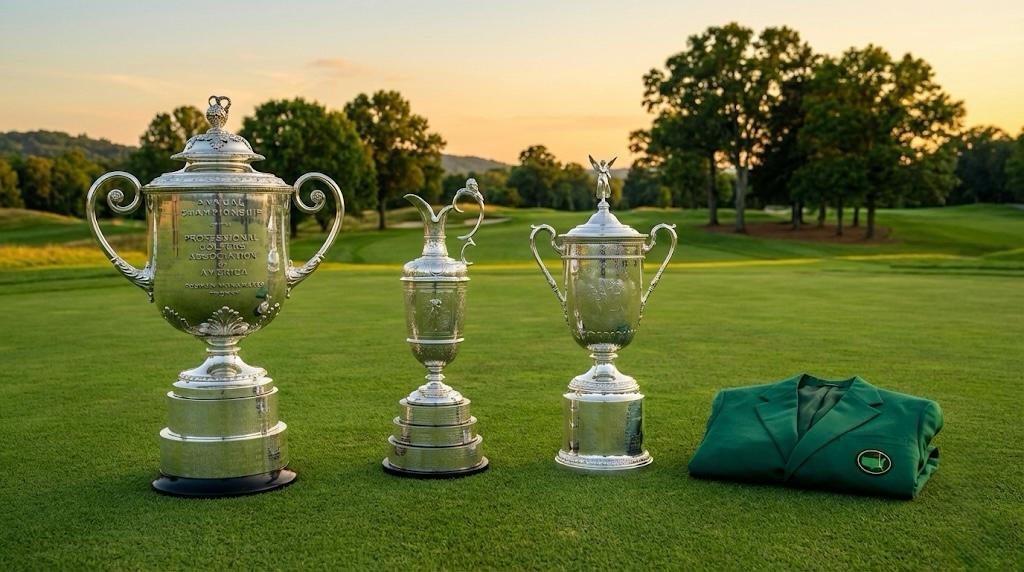
Golf is a sport steeped in tradition, prestige, and class. From the lush greens of the course to the meticulously designed clubs, each aspect of the game exudes a sense of history and elegance. Among these elements, golf trophies – the coveted prizes of the tournament – hold a special place. These iconic awards not only represent the winning golfer’s skill and determination but also carry a rich history and meaningful symbolism. In this article, we’ll delve into the story behind some of the most iconic golf trophies and what they symbolize, offering a unique perspective on this beloved sport.
The Claret Jug: The Open Championship
The Claret Jug, officially known as The Golf Champion Trophy, is awarded to the winner of The Open Championship, one of the four major championships in professional golf. The trophy, first presented in 1873, replaced the original prize of a red leather belt with silver buckle.
Its design is based on the medieval ‘claret jugs’ used to serve wine. The symbolism here lies in the association of the jug with a time-honored tradition, reflecting the essence of the tournament itself. The names of all the previous winners are inscribed on the jug, creating a tangible link to the history of the sport.
The Green Jacket: The Masters Tournament
At The Masters Tournament, one of the most prestigious events in golf, the winner is honored with a distinctive green jacket. The tradition began in 1937 when members of the Augusta National Golf Club wore green jackets to distinguish themselves from the crowd.
The symbolism of the Green Jacket is twofold. Firstly, it represents membership of an exclusive club, as only winners of The Masters or members of the Augusta National Golf Club are entitled to wear it. Secondly, the green color reflects the lush, pristine condition of the golf course, a crucial aspect of the sport.
The Wanamaker Trophy: PGA Championship
The Wanamaker Trophy, awarded to the winner of the PGA Championship, is named after Rodman Wanamaker, who played a significant role in establishing the Professional Golfers’ Association of America. It’s one of the largest trophies in professional golf, standing nearly 2.5 feet tall and weighing 27 pounds.
The size and weight of the Wanamaker Trophy symbolize the magnitude and prestige of the tournament it represents. Moreover, engraved on its silver surface are the names of past champions, honoring the legacy of the game.
The U.S. Open Trophy
The U.S. Open Trophy, awarded to the winner of the U.S. Open, dates back to 1895. The trophy was destroyed in a fire in 1946 and had to be recreated from photographs of the original.
The trophy is a sterling silver cup, adorned with elaborate ornamentation. The names of previous winners are engraved on the base, acknowledging the tournament’s rich history. The trophy represents the pinnacle of achievement in American golf, symbolizing the grit and determination required to prevail in one of the sport’s most challenging competitions.
Golf trophies are more than just symbols of individual triumph; they are embodiments of the rich history, tradition, and enduring spirit of the game. From the Claret Jug’s reflection of time-honored tradition to the Green Jacket’s symbolization of exclusivity and pristine golfing conditions, each trophy carries a unique story and meaning. These iconic awards, while coveted for their prestige, also serve as a timeless reminder of the sport’s enduring allure and the unforgettable moments that define golf history.
-

 Product Review6 years ago
Product Review6 years agoThe Perfect Practice Putting Mat Review by Jason Tenzer
-

 Blog4 years ago
Blog4 years agoLoophole Rule Offers PGA Tour Pros a Mulligan
-

 Blog4 years ago
Blog4 years ago2021 Buyer’s Guide: The Top 10 Value Golf Balls For Distance & Feel
-

 Blog5 years ago
Blog5 years agoGolf Marriage Counselor
-

 Blog6 years ago
Blog6 years ago9 Biggest Chokes Of The Past Decade
-

 Product Review6 years ago
Product Review6 years agoTHE ADJUSTABLE IRONS: WALKING STICKS GOLF CLUBS
-

 Blog4 years ago
Blog4 years agoWhat Your Golf Clubs Say About You
-

 Equipment6 years ago
Equipment6 years agoOHK Sports Interview by Jason Tenzer


